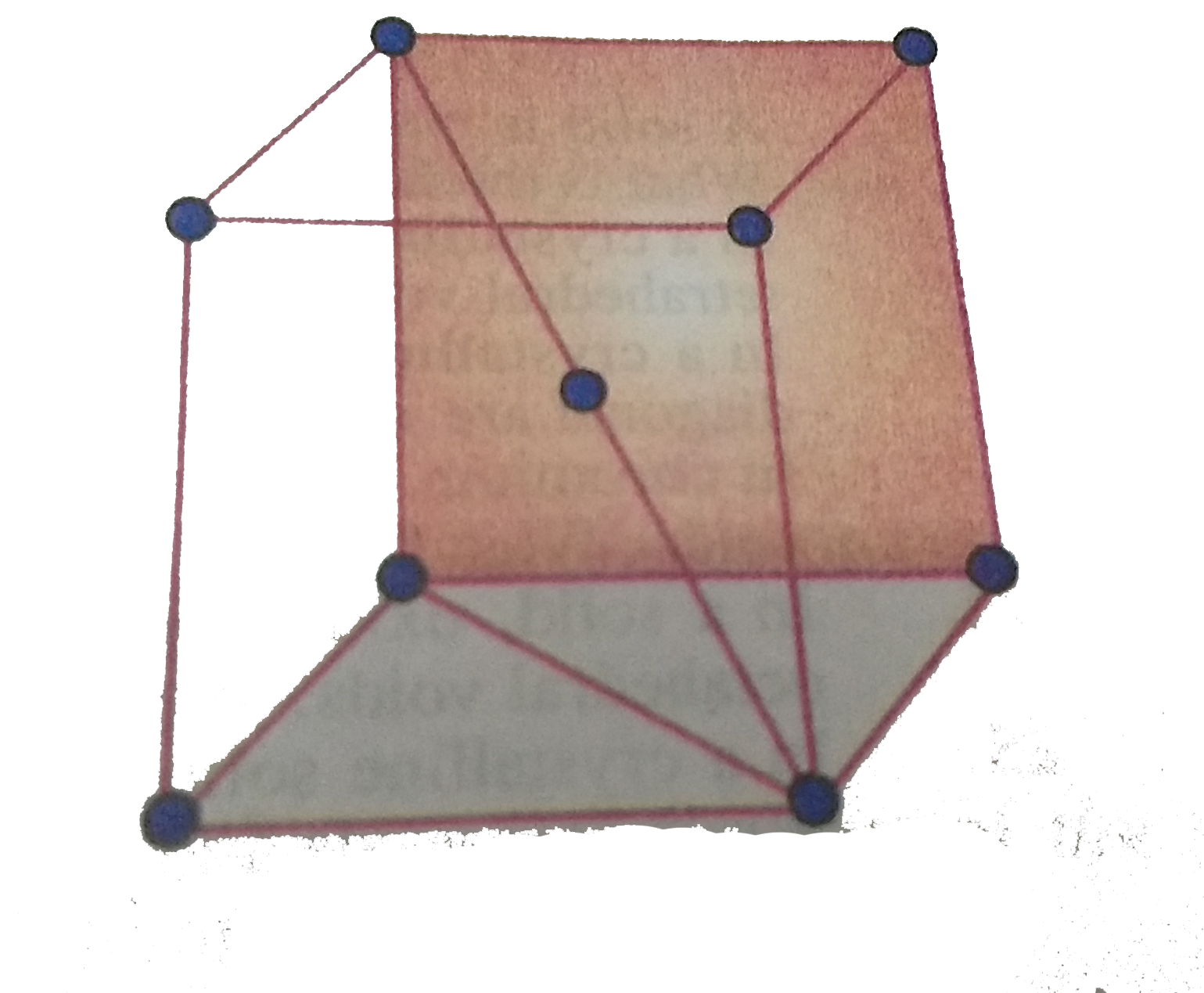How many 'nearest' and 'next nearest' neighbours respectively does sodium have in f.c.c. lattice
8,8
12,6
6,9
8,2
To determine the number of 'nearest' and 'next nearest' neighbors that sodium has in a face-centered cubic (FCC) lattice, we can follow these steps:
Step 1: Understand the FCC Lattice Structure
In a face-centered cubic (FCC) lattice, atoms are located at each of the corners of the cube and at the centers of each face of the cube.
Step 2: Identify Nearest Neighbors
The nearest neighbors of an atom in an FCC lattice are the atoms that are closest to it. For an atom located at a corner of the FCC unit cell, the nearest neighbors are the atoms located at the centers of the adjacent faces.
- Each corner atom has 12 nearest neighbors (6 from the face centers and 6 from the adjacent corner atoms).
Step 3: Calculate the Number of Nearest Neighbors
For sodium in an FCC lattice:
- Nearest neighbors = 12
Step 4: Identify Next Nearest Neighbors
Next nearest neighbors are those that are not the closest but still relatively close. In an FCC lattice, the next nearest neighbors for a corner atom are the atoms located at the corners of the adjacent unit cells.
- Each corner atom has 6 next nearest neighbors, which are the corner atoms of the adjacent unit cells.
Step 5: Calculate the Number of Next Nearest Neighbors
For sodium in an FCC lattice:
- Next nearest neighbors = 6
Conclusion
Thus, sodium in an FCC lattice has:
- Nearest neighbors = 12
- Next nearest neighbors = 6
Final Answer
The number of nearest and next nearest neighbors respectively for sodium in an FCC lattice is 12 and 6.
---
In a face-centered cubic (FCC) lattice, atoms are located at each of the corners of the cube and at the centers of each face of the cube.
The nearest neighbors of an atom in an FCC lattice are the atoms that are closest to it. For an atom located at a corner of the FCC unit cell, the nearest neighbors are the atoms located at the centers of the adjacent faces.
For sodium in an FCC lattice:
- Nearest neighbors = 12
Next nearest neighbors are those that are not the closest but still relatively close. In an FCC lattice, the next nearest neighbors for a corner atom are the atoms located at the corners of the adjacent unit cells.
For sodium in an FCC lattice:
- Next nearest neighbors = 6
Thus, sodium in an FCC lattice has:
- Nearest neighbors = 12
- Next nearest neighbors = 6
The number of nearest and next nearest neighbors respectively for sodium in an FCC lattice is 12 and 6.
Topper's Solved these Questions
- BOOK - VMC MODULES ENGLISHCHAPTER - THE SOLID STATEEXERCISE - LEVEL-250videos
THE SOLID STATE
- BOOK - VMC MODULES ENGLISHCHAPTER - THE SOLID STATEEXERCISE - LEVEL-2 (Numerical Value Type for JEE Main )15videos
THE SOLID STATE
- BOOK - VMC MODULES ENGLISHCHAPTER - THE SOLID STATEEXERCISE - LEVEL-0 ( Long Answer Type)6videos
THE SOLID STATE
- BOOK - VMC MODULES ENGLISHCHAPTER - SURFACE CHEMISTRYEXERCISE - PRACTICE EXERCISE9videos
SURFACE CHEMISTRY
- BOOK - VMC MODULES ENGLISHCHAPTER - THEORY OF SOLUTIONSEXERCISE - JEE Advanced (Archive)31videos
THEORY OF SOLUTIONS
Similar Questions
Knowledge Check
- Question 1 - Select One
How many radii does a circle have?
A2B4CcountlessDnone of the above
Potassium crystallizes in body centered cubic lattice with a unit cell length a=5.2Å
(A) what is the distance betweenn nearest neighbourss?
(B) What is the distance between next nearest neighbour ?
(C) How many nearest neighbours does each K atom have ?
(D) How many next nearest neighbours does each K has ?
(E) What is calculated density of crystalline KView SolutionMetallic gold crystallizes in the fcc lattice.
The length of the cubic unit cell is a=4.242A.
a. What is the closest distance between gold atoms?
b. How many "nearest neighbours" does each gold atom have at the distance calculated in (a)?
(c) What is the density of gold? (Aw of Au =197.0gmol−1)
d. Prove that the packing factor for gold is 0.74.
View SolutionAn element crystallises in a b.c.c. lattice. Nearest and next nearest neighbours are respectively
View SolutionDescribe the unit cell of sodium chloride with a neat diagram stating.
Number of nearest neighbours around sodium and chloride ions.View SolutionPotassium crystallises in a bcc lattice as shown in figure :
(a) What is the distance the nearest neighbours ?
(b) What is the distance between the next nearest neighbours ?
(c) How many nearest neighbours does each potassium atom have ?
(d) How many next nearest neighbours does each potassium atom have ?
 View Solution
View SolutionThe numberof next nearest neighbours of Cs+ in a lattice of CsCl is given by:
View SolutionThe number of nearest neighbours and next nearest neighbours of an Na⊕ ion in a crystal of NaCl are, respectively,
View Solution

